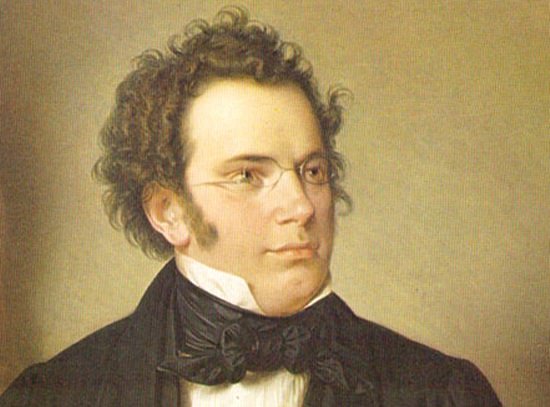
You know, music is full of irritating inconsistencies. The French horn for example, isn’t French and the English horn is neither English nor a horn. Saxophones are classed as woodwind instruments despite the fact that they’re usually made of metal. Then there are the names of works. For example, Beethoven’s Oboe Trio was written for three oboes and so you’d expect his piano trios to be written for three pianos. But they’re not. The meaning of the words “symphony” and “concerto” were quite clear in people’s minds for at least two hundred years. Then in 1963 Benjamin Britten caused confusion by writing a cello concerto which he called a Cello Symphony. But I think he was just being awkward.
But let’s get back to piano trios. A piano trio is nearly always for piano, violin and cello. One of my mother’s favourite works was Dvorak’s Piano Trio No. 4 in E minor, better known as the Dumky Trio. And I have to agree that it is an attractive combination, contrasting the many tone colours of the piano with those of the violin and cello. Beethoven wrote thirteen piano trios, Mozart wrote over twenty and Haydn wrote at least forty-five. You might be wondering how this combination of instruments came about, so I shall tell you. But I’ll keep it short because I can sense your eyes glazing over already. Although its origins can be traced back to the Baroque, the emergence of the piano trio coincided, not entirely surprisingly, with the invention of the piano.
At around the same time, there was an increasing interest in home music-making and a type of composition known as the “accompanied sonata” became popular. It was basically a piano sonata with optional play-along parts for other instruments. A flute or violin played more-or-less the same as the piano right-hand and the cello followed the bass line. This was partly for commercial reasons because a single work could be sold as a piano sonata, a violin sonata, or a trio. This clever marketing ploy was not lost on Haydn, whose early piano trios followed the same convention.
But there was another issue, because eighteenth century pianos were not very powerful. The addition of the violin and cello reinforced the tinkling piano tone and produced richer and more satisfying sound. In Haydn’s later works, the string parts gradually took on more independent identities and some of his later piano trios – and those of every composer since – are for three instruments of equal importance. So to wash away the high season blues, here are the two fabulous piano trios by that master of melody, Franz Schubert.
Franz Schubert (1797-1828): Piano Trio No 1 in B flat, Op 99. Eben Trio (Duration: 41:17; Video: 720p HD)
In his short life, Schubert was best known for his six hundred songs and his wonderful gift of melody-writing. He seemed incapable of writing a bad tune. Just listen to the soaring melody that opens this work. But Schubert was not content merely with tunes, because he develops the various melodies – and the moods -throughout the work.
This is a lovely performance which has clearly been given a great deal of thought. The slow movement begins with a hauntingly beautiful theme on the cello and there’s a bright and airy scherzo before the elegant and dance-like finale. There are plenty of magic moments too, for example the delicious cello phrase during the change of key at 03:20. There are many others during the work but I’ll leave you discover them for yourself.
Franz Schubert: Piano Trio No 2 in E flat, Op 100. Horszowski Trio (Duration: 50:10; Video: 1080p HD)
This was one of Schubert’s last compositions and like the first piano trio it’s a large work both in terms of length and content. If anything, this work is more virtuosic than the first. Emotionally it ventures into more turbulent waters; sometimes remote keys too. It is also given one of the best performances I’ve heard, with beautifully shaped phrases and a lovely sense of timing and pace.
You might recognise the slow movement because the main theme was used in Stanley Kubrick’s 1975 film Barry Lyndon. I found that it also showed up in several other movies including The Hunger, Crimson Tide, The Piano Teacher and Land of the Blind. The gentle lament, first heard on the cello turns into a lilting Austrian folk song and then transforms into an epic statement of passion.
The third movement exudes charm and has some ravishing key changes before launching to a remarkable waltz-like middle section. But watch out for some musical surprises. The complex and virtuosic finale contains a wealth of lovely melodies and contains one of Schubert’s most profound surprises, but I can’t tell you what it is. Otherwise it wouldn’t be a surprise, would it?
 |
 |
 |





